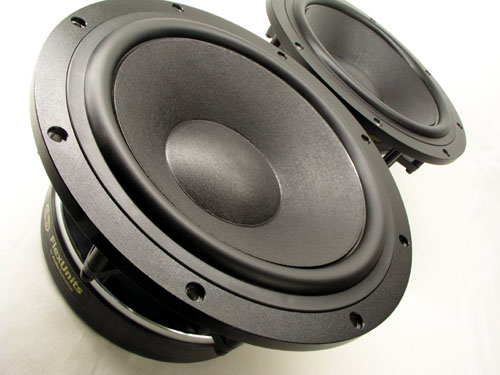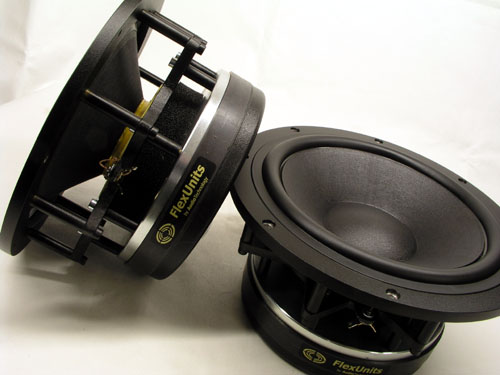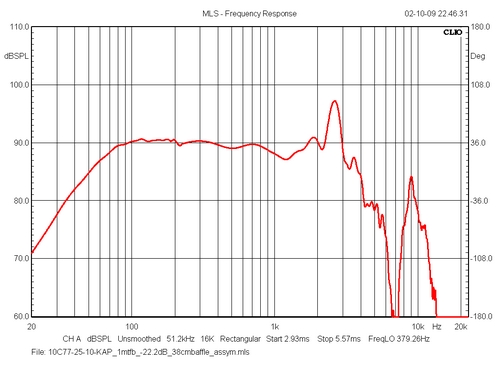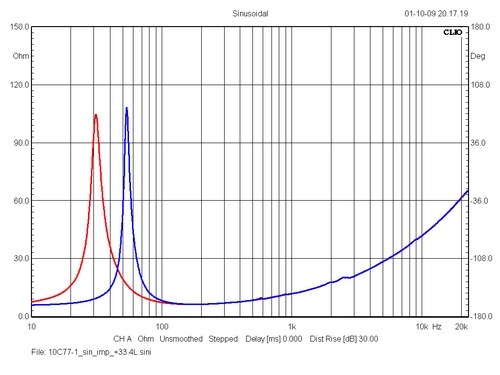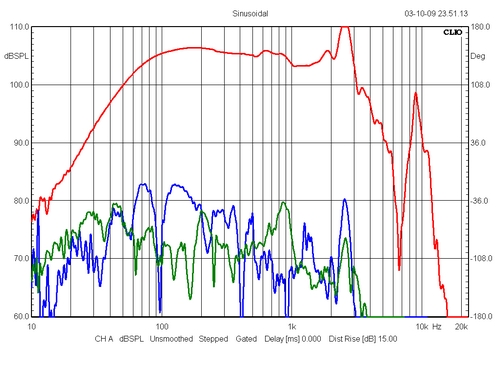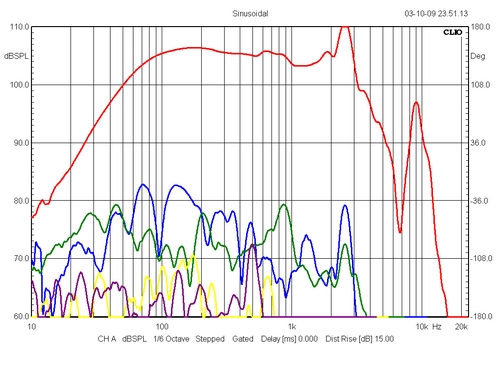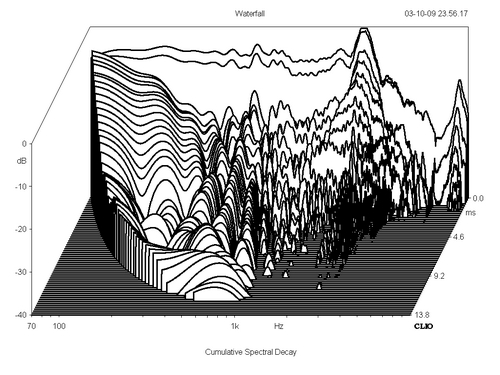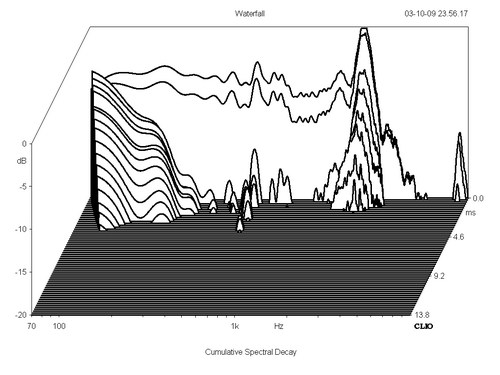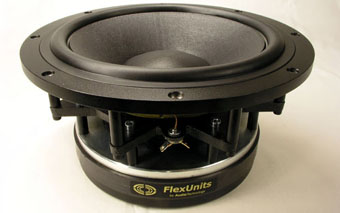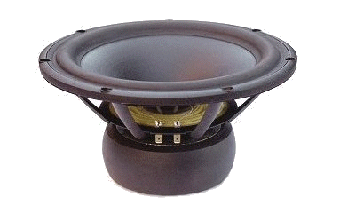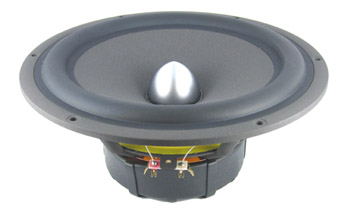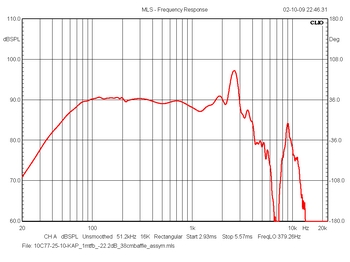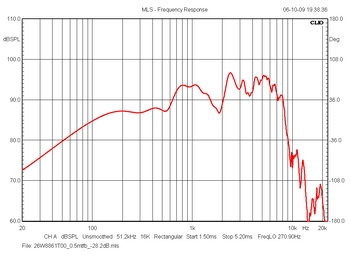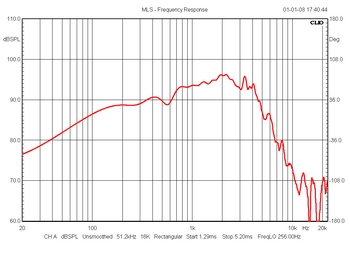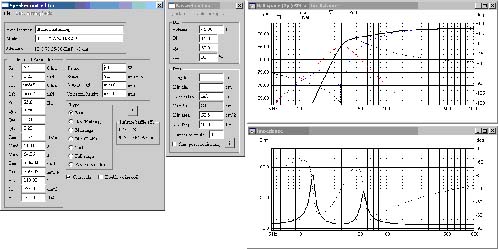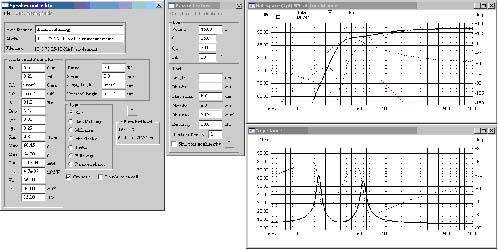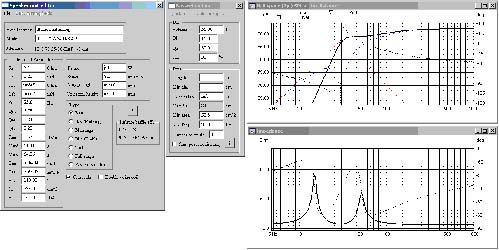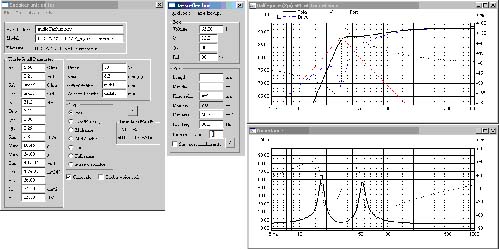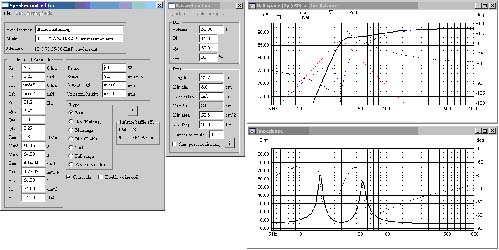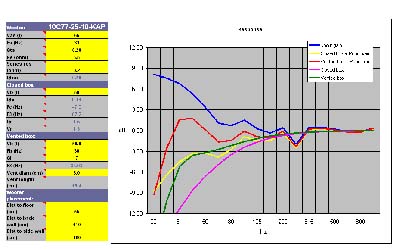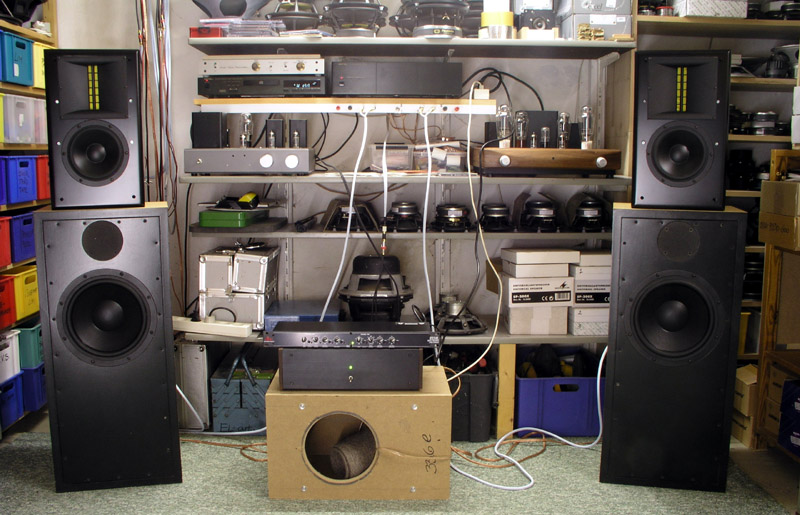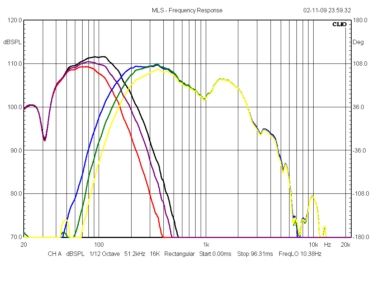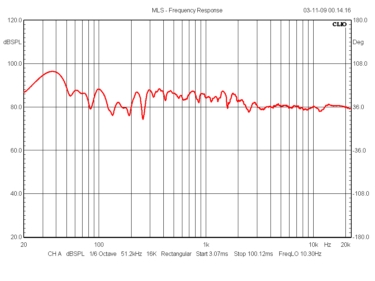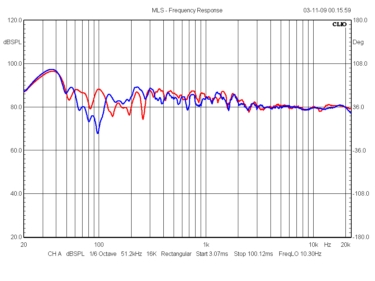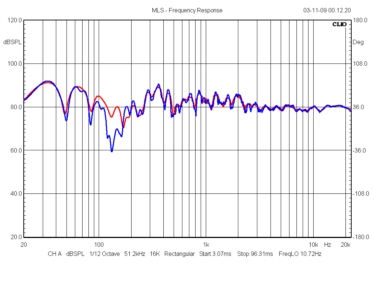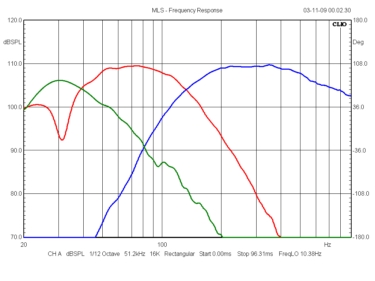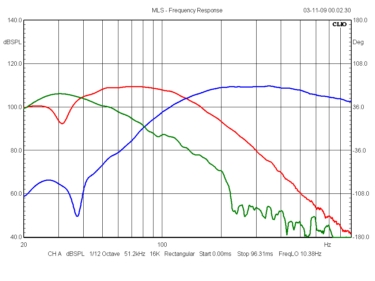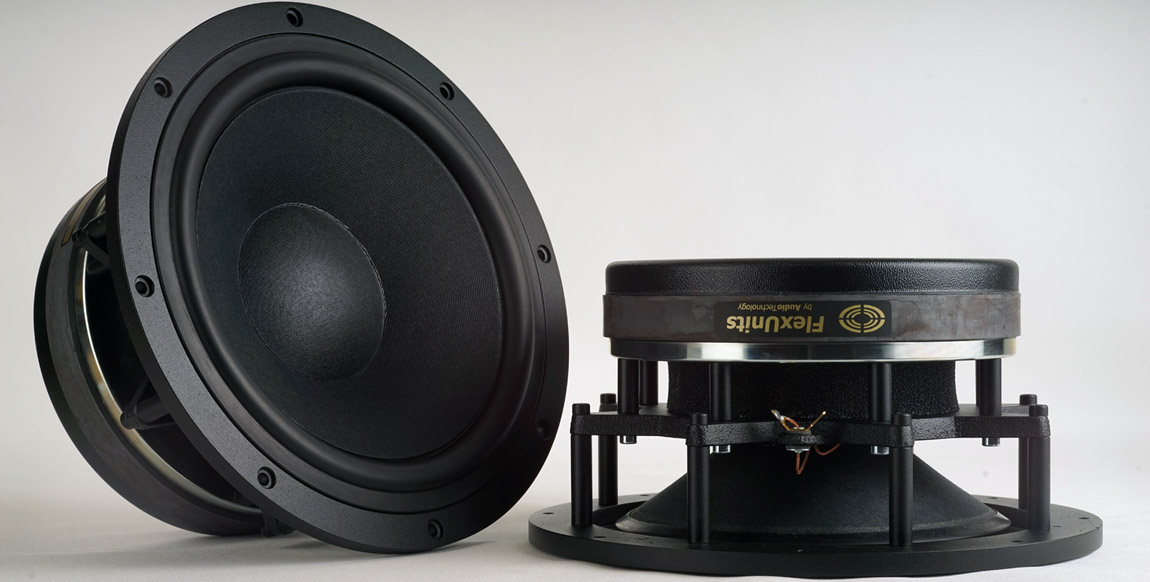Audio Technology
10C77-25-10-KAP
|
|
Link to AudioTechnology website.
|
|
Initial measurements
The peak... This driver is dedicated bass driver and unlikely to play anything above 500 Hz, but for the sake of curiosity, let's take a look at the 2.5 kHz peak.
TS data
After burn-in:
Comparing 10" bass drivers
Based on experience from the Jensen 1071, SEAS Cyclop, Jenzen NEXT, PRELUDE and Jenzen Accu the 10C77 is a clear winner in terms of overall performance. I rate the SEAS a tiny bit higher than the ScanSpeak despite ScanSpeak's higher mechanical Q but time will tell when the 26W/8861T00 is tried in the Jenzen transmission line cabinets. Box simulation 10C77-25-10-KAP First of all I do not intend to make a vented system for this bass driver, rather a transmission line cabinet. But before doing so, I want to investigate the vented option to get a better feel of the driver and its performance from a typical bass reflex enclosure. Getting any 10"
driver in hand we usually start thinking
of some 40-60 liter cabs. Most 10" drivers
will produce decent bass from this size cabinet
unless TS data are severely "out of
range", i.e. having extremely low or high
Qt. Ideally only drivers with a Qt close to 0.35
will perform optimally in vented enclosures. As
few drivers are even close to this requirement,
we tend to use too large cabinets for low-Qt
drivers and too small cabinets for high-Qt
drivers. Based on experience I like a bass driver for vented boxes with a Qt around 0.25-0.3 in a volume 1.5-2 x calculated optimum volume - and tuned a little lower than optimal to produce a slightly shelved response towards lower frequences. This will make a decent flat response taking into account the inevitable room-gain. I assume some 80-100 cm to the rear wall (behind driver; some call this the front wall... whatever), 50-70 cm distance to floor and 1.5-2 meters to side walls. Placing a bass driver in a corner is doomed to fail except for dedicated subwoofers taking advantage of some 6-8 dB roomgain. - click images to view large -
As can be seen from above illustrations, even 50 liters may produce decent bass down to 30 Hz when placed e.g. 55 cm above floor, 110 cm to rear wall and 180 cm to side wall. This room-gain calculation is a simplified model and doesn't take into account a lot of things, but based on experience it does give a decent hint of where we're heading.
Having a pair of 65 liter cabs at hand I quickly set up the bass drivers and placed the AT-SWs on top. An electronic crossover, 24 dB-LR, made it easy to find a proper point of crossover between the two units. Playing a clean fender bass from a test CD is great tool to determine the best crossover frequency and 130-150 Hz made an overall coherent sound although the AT-SWs may do even better from being e.g. 15-20 cm closer to the bass driver - at least when listening at very short distance as my workshop only allows. While playing the Fender bass track and adjusting the point of crossover from below 100 Hz to above 200 Hz I placed my finger tips on the 18H52 membrane of the AT-SW and I'm always amazed how much energy comes from the 100-200 Hz range. This is an indeed important frequency range and having a driver not capable of moving sufficient air leaves the overall sound thin and anaemic. 135 cm^2 like the 18H52 here does well down to 140-150 Hz, where an e.g. 6A77 with its 175 cm^2 does well to around 100 Hz. Using a 15H52 (95 cm^2) for mid we may have to increase point of crossover up to 300 Hz depending on front panel dimensions. The wider the panel, the deeper we can go. The result from these experiments left no doubt in my mind that a system like this is a go! These bass drivers are exceptionally good. Clean, punchy and dry bass is the result from these 65 liter cabs initially fitted with 2 Variovents. Now, Variovents may be good for drivers having a higher Qt compared to these 10C77s, thus new rear panels were made and fitted with two 68 mm ports of 22 cm length, providing Fb ~28 Hz.Thanks to the generous motor system, these 10C77s' are control-freaks. I'm sure the majority of speakers that will be made from these driver will be vented systems. Control is indeed what comes to mind when listening to these 10C77s. Adding two 68 x 220 mm vents to the rear brought things into perspective. Variovents with these drivers is a miss-fit. I don't think I've ever heard better bass from a vented system.
So, if you can't wait, the
current recipe is this: The cabs seen
above are a bit too high and the distance between
bass and mid should be reduced to ~15-18 cm.
Thus, bass cabs should be 36 x 65 x 36 (W x H x
D). Made from 22 mm MDF, this will make a net
volume of 62.5 liter. Allow generous bracing to
swallow some 2-3 liter to make a final net volume
of 60 liter. Place 10C77 with 10 cm from frame to
top edge. Add two 68 x 200 mm vents to make Fb =
32-33 Hz. Place AT-SW on top and use an
electronic 24 dB-LR at 140 Hz. Next: The PRELUDE
January 2010: Numerous crossovers
are being tested for this PRELUDE speaker
featuring temporary middrivers while waiting for
some new 15H52 drivers. 1st order filters for mid
and LR2 for tweeter and bass deliver an
astonishing presence and transparency with my new
JungSon class A amp. "Problem" with
this speaker is how loud it goes with very low
distortion. All of a sudden I find myself
listening at too high levels for the room....and
for my ears. May 2010: Prelude launched. Click heading or image above. A few in-room (workshop) measurements on current set-up (10C77 + AT-SW)
Overall: This speaker goes deep! |
